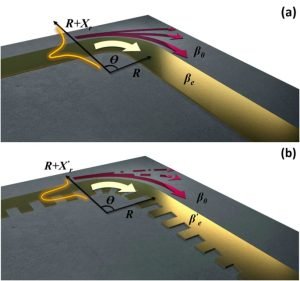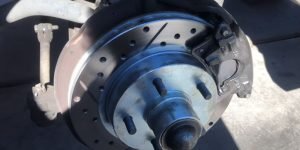
Keeping Your Car Battery Happy in the Cold: A Winter Survival Guide
Winter’s chill can be tough on your car, and your battery is particularly vulnerable. A sluggish battery can leave you stranded on a frosty morning, so understanding how to maintain your car battery in cold weather is crucial. This guide will equip you with the knowledge and steps to keep your car starting reliably all winter long.
🛒 Recommended Product
Understanding the Cold’s Impact on Car Batteries:
Cold temperatures significantly reduce a battery’s ability to deliver power. The chemical reactions within the battery slow down, resulting in reduced cranking power. This means your engine might struggle to turn over, especially on very cold mornings. Even a seemingly healthy battery can fail in freezing conditions if not properly cared for.
Step-by-Step Guide to Cold Weather Battery Maintenance:
-
Regular Visual Inspection: Begin by regularly inspecting your battery for signs of damage. Look for cracks in the casing, corrosion on the terminals, or any leaks. A visual check every few weeks, especially during colder months, is a simple yet effective preventative measure.
-
Clean Battery Terminals: Corrosion is a major culprit in winter battery failure. Use a battery terminal cleaner brush or a wire brush to remove any white, powdery buildup. Be careful not to touch the terminals with bare skin, as the corrosive material can cause burns. After cleaning, apply a corrosion inhibitor (a thin layer of petroleum jelly will do the trick). This prevents future corrosion from forming.
-
Check the Battery Fluid Level (if applicable): Some car batteries (typically older ones) require checking and topping off the electrolyte fluid level. Consult your car’s owner’s manual for instructions, as improper handling of battery acid can be dangerous. Only add distilled water, never tap water. Never overfill.
-
Ensure a Secure Connection: Make sure the battery cables are securely fastened to the terminals. Loose connections can hinder the flow of electricity, leading to poor starting performance. Tighten them firmly, but avoid over-tightening.
-
Consider a Battery Warmer: For those in extremely cold climates, a battery warmer can be a worthwhile investment. These devices help maintain a consistent battery temperature, preventing significant performance drops.
-
Keep Your Battery Charged: Short trips don’t allow your battery to fully recharge. If you frequently make short commutes, consider taking longer drives occasionally to ensure your battery receives adequate charging time. If your vehicle sits for extended periods, consider using a trickle charger.
-
Avoid Deep Discharges: Draining your battery completely is extremely harmful, especially in cold weather. Avoid leaving lights, accessories, or the ignition on when the car is off.
Common Mistakes to Avoid:
- Ignoring visual signs of trouble: Don’t wait for your car to fail to start before addressing battery issues. Regular inspections are key.
- Using the wrong type of water: Only use distilled water to top off the electrolyte fluid. Tap water contains minerals that can damage the battery.
- Over-tightening terminals: Over-tightening can damage the terminals and lead to further problems.
- Neglecting the charging system: A faulty alternator or other charging system components can prevent your battery from recharging properly. Have your charging system checked regularly.
Tips for Extending Battery Life in Cold Weather:
- Park in a garage: Garages provide a more consistent temperature, reducing the stress on your battery.
- Keep your car clean: Snow and ice buildup can impact battery performance.
By following these simple steps and avoiding common mistakes, you can significantly improve your car battery’s chances of surviving the winter months and keeping you on the road. Remember, prevention is key! Regular maintenance will save you time, frustration, and potential roadside emergencies.
🛒 Recommended Product
FAQ
Q. How does cold weather affect my car battery?
A. Cold weather significantly reduces a car battery’s ability to deliver power. The chemical reactions within the battery slow down at lower temperatures, resulting in reduced cranking power. This makes it harder for your engine to start, especially on very cold mornings. Additionally, the electrolyte fluid in the battery can thicken, further hindering its performance.
Q. How can I prevent my car battery from dying in cold weather?
A. The best preventative measure is to ensure your battery is in good working order before winter arrives. Have it tested for its charge and cranking power by a professional. Keeping your battery terminals clean and free of corrosion is also crucial. Driving your car regularly helps keep the battery charged. If you won’t be driving for extended periods, consider using a battery tender or trickle charger.
Q. My car battery is low. Should I use a jump starter?
A. If your battery is low, a jump starter can be a helpful solution, especially in emergencies. However, ensure you follow the instructions carefully to avoid damaging your vehicle’s electrical system. If you frequently need jump starts, it indicates a more serious underlying problem with your battery or charging system which needs professional attention.
Q. Should I remove my car battery during the winter?
A. Removing your car battery for the winter is generally not recommended unless you’re storing the vehicle for an extended period (months) in a very cold environment. This is because removing and reinstalling the battery can potentially damage it, and it will need to be re-registered with the vehicle’s computer system in many modern cars. A battery tender is a far safer and more effective solution for long-term storage.
Q. What is a battery tender and how does it work?
A. A battery tender, also known as a trickle charger, is a device that maintains the charge of your car battery. It slowly supplies a small current to the battery, preventing it from draining completely, even when the car isn’t being driven. It’s a great option for vehicles that sit unused for extended periods, particularly during winter.
Q. My car’s lights stay on after I turn it off. How does that impact my battery?
A. Leaving your car’s lights, interior lights, or any accessories on after turning off the ignition can quickly drain your car battery, especially in cold weather. The cold temperatures already reduce the battery’s effectiveness, and the added drain can lead to a dead battery and a no-start situation. Always double-check that everything is turned off before leaving your car.
Related Articles
Ceramic Coating vs. Wax: Which Protects Your Car Better in 2025?
Ceramic Coating vs. Wax: Which Protects Your Car Better in 2025? Recommended Product: Titanium Ceramic Wax Cream, 2025 Strong Protection Car Coating P…
Exploring the Differences – Limited Slip vs Posi Traction – Which is Right for Your Car?
Introduction When it comes to enhancing your car’s performance and handling, the choice between Limited Slip and Posi Traction differentials is …
How do I know which radiator cap to buy?
When it comes to choosing the right radiator cap for your vehicle, making an informed decision is crucial. The radiator cap plays a crucial role in ma…
Affiliate Disclosure: As an Amazon Associate, I earn from qualifying purchases made through links on this site.








